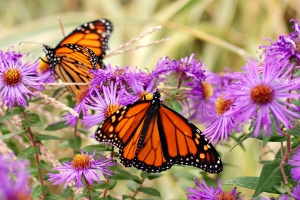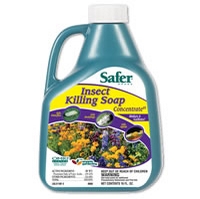 We’re going to look at the basics of creating a garden that is perfect for butterflies. You need to plan a garden with the purpose of attracting butterflies, keeping them in your garden, and making the environment friendly for them to breed.
We’re going to look at the basics of creating a garden that is perfect for butterflies. You need to plan a garden with the purpose of attracting butterflies, keeping them in your garden, and making the environment friendly for them to breed.
The first thing you need to do is choose several plants that produce nectar for the butterflies and will hopefully provide continuous blooms through the summer. The most important time to have blooms is mid to late summer. This is when most butterflies are more active. Flowers that produce multiple blooms on a single plant and contain a lot of nectar are best.
You probably want to choose a variety of annuals for your garden, because annuals bloom all though the season. This provides butterflies with a continuous supply of nectar, and will keep the butterflies coming to your yard all season.
Some perennials are very good for attracting butterflies. Bee Balm, Purple Coneflowers, Autumn Joy Sedum, Liatris Spicata, New England Aster and Garden Phlox are lovely flowers that butterflies adore and are in the pinkish/purple color scheme. For gorgeous gold, yellow and orange combinations try Blanket Flower, Butterfly Weed, Goldenrod and Coreopsis. For a boggy poorly drained soil type plant, the Texas Red Star Hibiscus is a favorite of butterflies. Herbs such as parsley, dill, and mint provide good nectar for butterflies.
Homemade Butterfly Feeder
You can make homemade butterfly feeders from small jars, such as baby food jars. You just drill a hole in the middle of the lid and stuff it with cotton. Then you fill the jar with a mixture of 1:9 sugar and water. (1 part sugar and 9 parts water.)
You can decorate the jar with brightly colored bits of felt to attract the butterflies to it. Hang it somewhere in your garden and the butterflies will come suck the “nectar” out through the cotton in the lid.
Go Easy on the Pesticides
 You should take care to not use too many pesticides around your garden. These poisons can kill butterfly larva, and they can also harm the butterflies themselves. It doesn’t take a lot of insecticide to kill these delicate creatures. Insecticides can kill delicate caterpillars before they have a chance to grow into butterflies. If you have to use some type of bug control product, use organic insecticidal soap sparingly.
You should take care to not use too many pesticides around your garden. These poisons can kill butterfly larva, and they can also harm the butterflies themselves. It doesn’t take a lot of insecticide to kill these delicate creatures. Insecticides can kill delicate caterpillars before they have a chance to grow into butterflies. If you have to use some type of bug control product, use organic insecticidal soap sparingly.
Some butterfly larva can look remarkably similar to common garden pests, and although butterfly larvae do feed on plants, they don’t typically eat enough to do any real damage. So be sure your identification is correct before you spray.
Most flowers that are brightly-colored and sweet-smelling should attract butterflies to your garden. You should plant a wide variety of flowers, mostly annuals, if you want to attract the most different types of butterflies. Since different species are attracted to different types of flowers, having a good variety will ensure that you get the most different types of butterflies visiting your garden.
Give Your Butterflies a Happy Home
In addition to providing plants that will feed the butterflies and their larva, you’ll need to be sure your yard is hospitable in other ways. Butterflies need a bit of shelter for their eggs. You’ll need to provide some sort of windbreak around your butterfly garden, as in tall wildflowers, gomphrena, butterfly bushes, so the butterflies can lay their eggs in an area where wind won’t harm them.
They also need a mud puddle at which to congregate. Butterflies like to gather at the edges of puddles, so you’ll need to provide at least one for them. If you use a sprinkler system, just dig out a shallow area to hold water and that will work perfect for the butterflies.

Leave a Reply